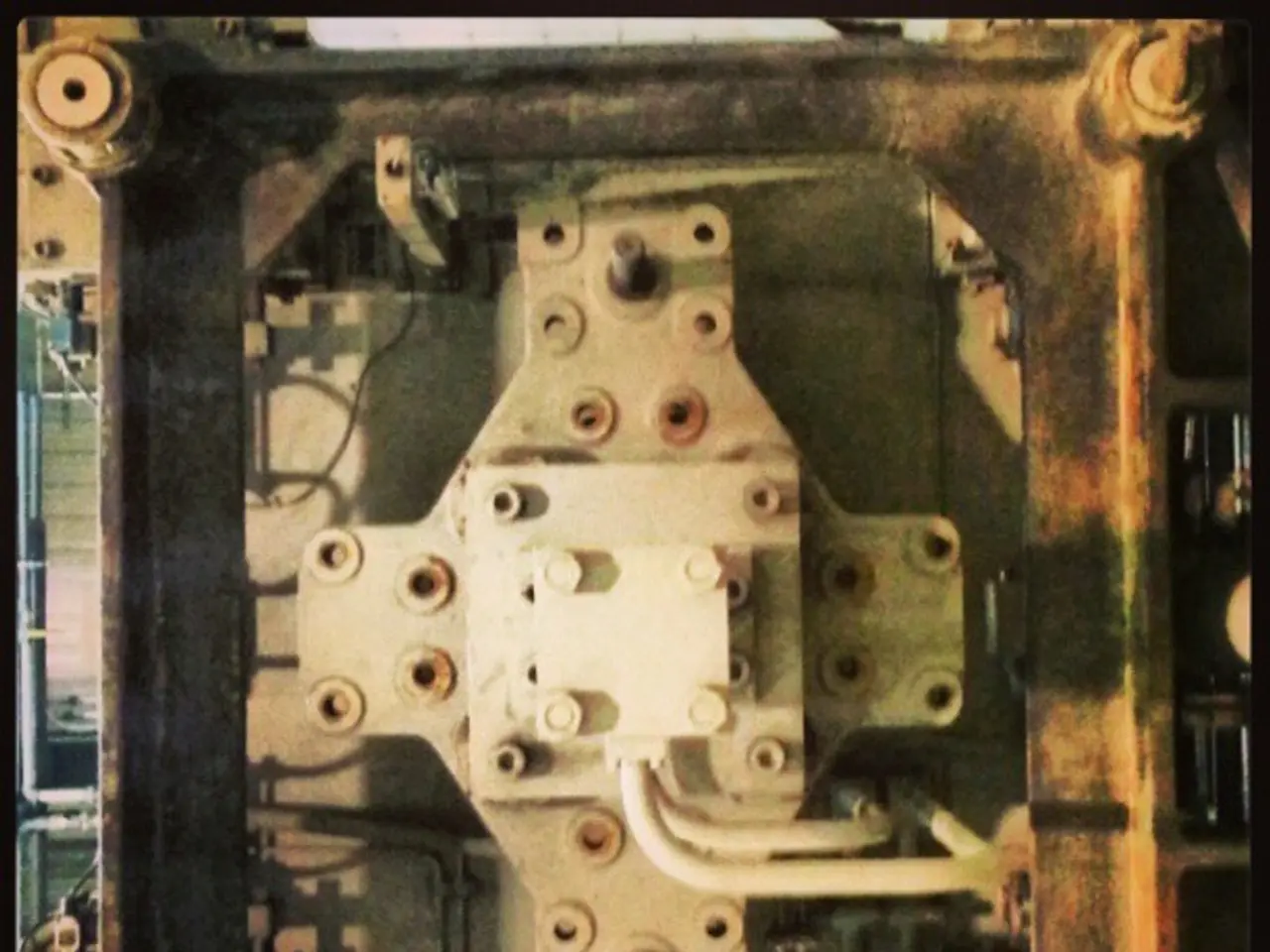Unveiling the Perks of Integrating Metal Meshes in Your Manufactured Goods!
Expanded metal, a mesh-like structure created by punching slits into a solid metal sheet and stretching it, has found its place in various industries due to its versatility and practicality. This innovative manufacturing process, which can be applied to a range of metals including stainless steel, copper, aluminum, and titanium, offers a unique blend of strength, lightweight properties, aesthetic appeal, corrosion resistance, and airflow/light permeability.
The process involves feeding a metal sheet or coil into an expanded metal machine, which simultaneously makes slits and stretches the metal to create uniform openings in a continuous, CNC-controlled process. The result is a mesh that is both functional and decorative, suitable for a variety of applications.
In the realm of construction, expanded metal is used for building facades, walkways, flooring, safety guards, reinforcement, and scaffolding. Its light weight, strength, corrosion resistance, and structural stability make it an ideal choice for these purposes. In addition, expanded metal is also employed in filtration systems, protective guards for machinery, ventilation panels, and electronic enclosures, thanks to its durability and precise mesh structure.
The material's versatility extends beyond practical applications. In the realm of design, expanded metal is used in architectural decoration, furniture design, security screens, and artistic installations. Its attractive patterned appearance and the ability to be produced in various metals, including copper, aluminum, and titanium, make it a popular choice for designers.
Expanded metal sheets can be up to 10 feet long, while a standard roll can stretch up to 100 feet long, making it easy to handle and apply in a variety of settings. The strength of expanded metal makes it suitable for offering support to other structures during construction, and it is also used in infill panels and to make ventilations for big machines.
Moreover, expanded metal is highly efficient for power-related tasks due to continuous electric and magnetic energy flow. It is also mouldable and cheaper to use due to reduced waste. The openings in a metal mesh can range from the smallest size 1/8'' x 1/8'' to the biggest size 6'' x 6'', offering flexibility in design without weakening the structure.
The anti-slip properties of metal mesh, due to the sturdiness of the knuckles where the strands meet, make it suitable for anti-slip constructions such as walkways, stair treads, and ramps. It is also used in filtering water, such as in large gabions to avoid soil erosion.
While metal mesh is more expensive than wire mesh, it has reduced waste due to being made from one material. The openings in a metal mesh can take different shapes such as square, hexagon, diamond, and circle, adding to its decorative appeal.
In summary, expanded metal is a versatile and practical solution for a wide range of applications, from construction and technology to design and art. Its unique properties and adaptability make it a valuable resource in various industries and design contexts.
In the expansive world of global trade, expanded metal's versatility and unique properties make it a valuable commodity, finding its way into various industries such as data-and-cloud-computing, where its lightweight yet strong structure is suitable for electronic enclosures. Furthermore, expanded metal's efficiency in power-related tasks and its adaption to technology, like CNC-controlled processes in manufacturing, align with the demands of the fast-paced, technologically-advanced landscape of transportation and global trade.




